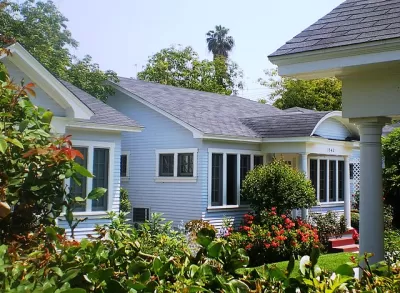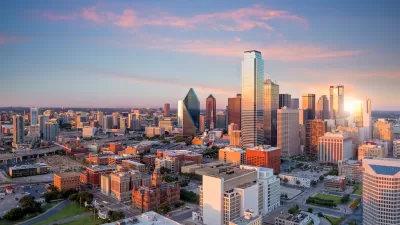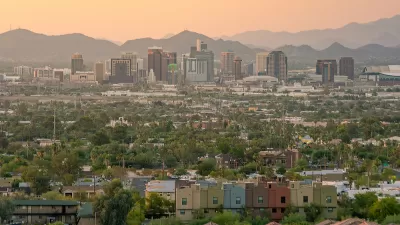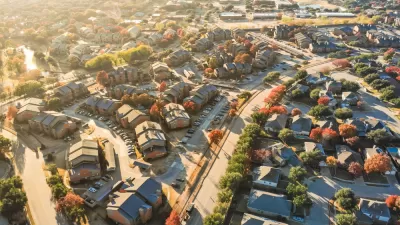A thought experiment compares the carbon impact of three new single family homes with the same block if it contained a duplex, a triplex, and a fourplex.

If it were legal everywhere, Michael Anderson writes, gentle density would confer massive carbon savings and ease the transition away from fossil fuels.
To illustrate, Anderson poses a thought experiment where three large new homes are constructed on one block, while a duplex, triplex, and fourplex are built on a site of the same size. "If we compare these two blocks after all the new homes are complete, the housing-related carbon emissions per household of the Plex Block will be about 20 percent lower," he writes.
It makes sense that smaller living spaces cost less carbon (and dollars) to heat in the winter and cool in the summer. And in the case of the McMansion, most of that space isn't even lived in.
Anderson also notes that when "missing middle" housing is permitted, the positive environmental effects extend to transportation. "This density effect is probably strongest if it's creating new options for living in a transit-rich, walkable area specifically for people who want to live a low-car life but couldn't previously afford that sort of neighborhood."
FULL STORY: A DUPLEX, A TRIPLEX AND A FOURPLEX CAN CUT A BLOCK’S CARBON IMPACT 20%

Maui's Vacation Rental Debate Turns Ugly
Verbal attacks, misinformation campaigns and fistfights plague a high-stakes debate to convert thousands of vacation rentals into long-term housing.

Planetizen Federal Action Tracker
A weekly monitor of how Trump’s orders and actions are impacting planners and planning in America.

In Urban Planning, AI Prompting Could be the New Design Thinking
Creativity has long been key to great urban design. What if we see AI as our new creative partner?

King County Supportive Housing Program Offers Hope for Unhoused Residents
The county is taking a ‘Housing First’ approach that prioritizes getting people into housing, then offering wraparound supportive services.

Researchers Use AI to Get Clearer Picture of US Housing
Analysts are using artificial intelligence to supercharge their research by allowing them to comb through data faster. Though these AI tools can be error prone, they save time and housing researchers are optimistic about the future.

Making Shared Micromobility More Inclusive
Cities and shared mobility system operators can do more to include people with disabilities in planning and operations, per a new report.
Urban Design for Planners 1: Software Tools
This six-course series explores essential urban design concepts using open source software and equips planners with the tools they need to participate fully in the urban design process.
Planning for Universal Design
Learn the tools for implementing Universal Design in planning regulations.
planning NEXT
Appalachian Highlands Housing Partners
Mpact (founded as Rail~Volution)
City of Camden Redevelopment Agency
City of Astoria
City of Portland
City of Laramie





























